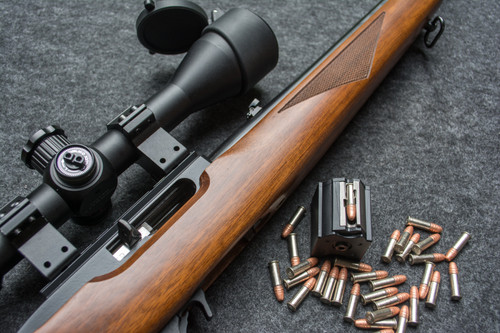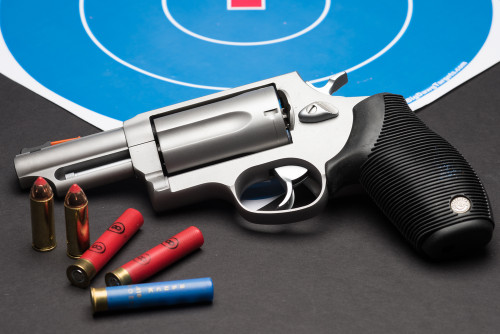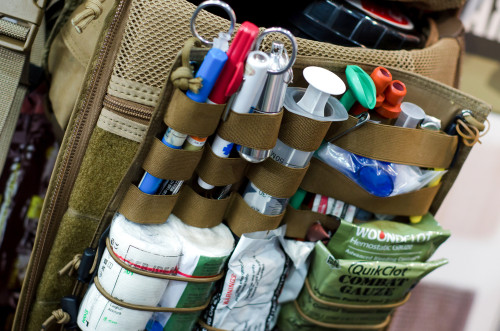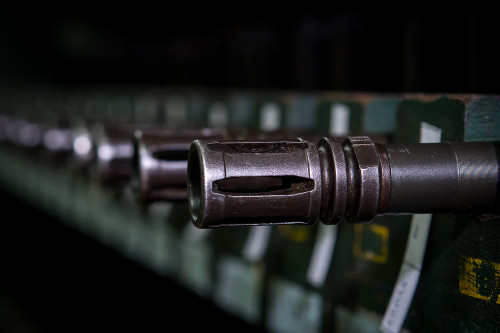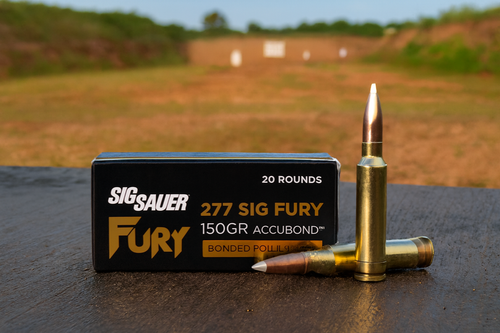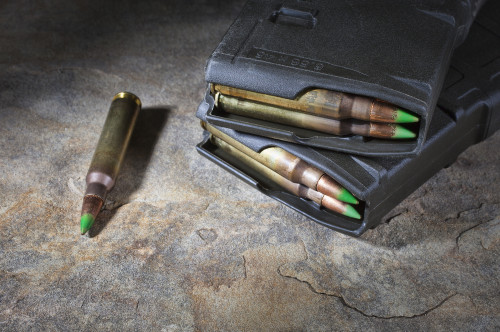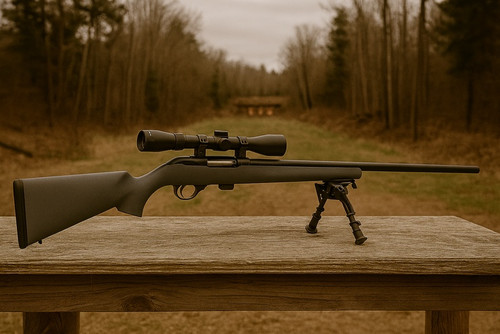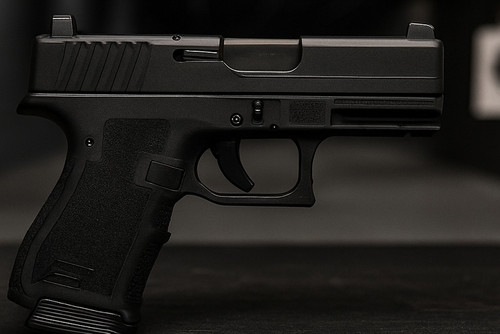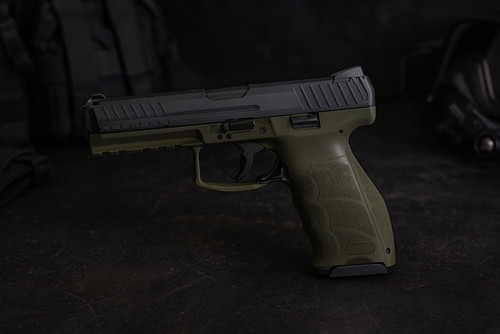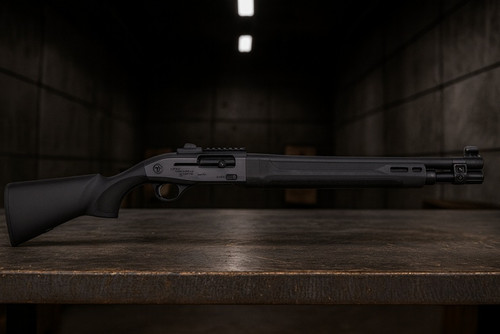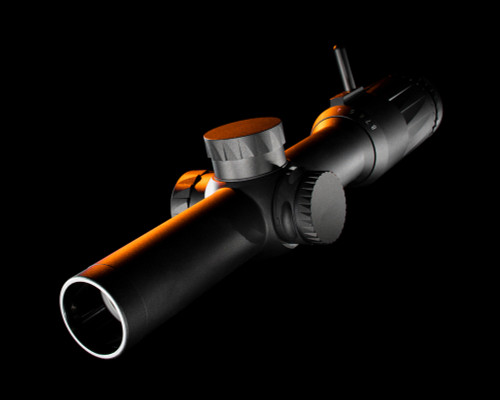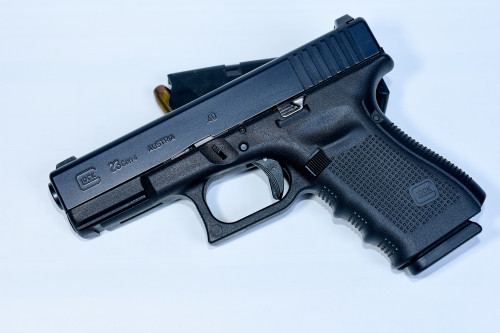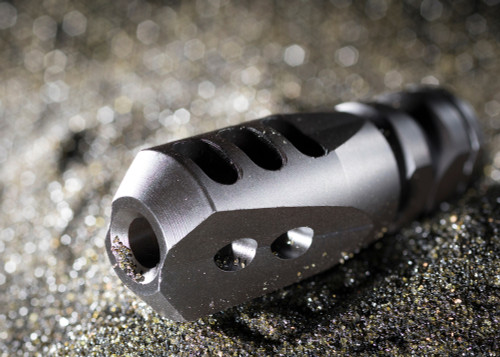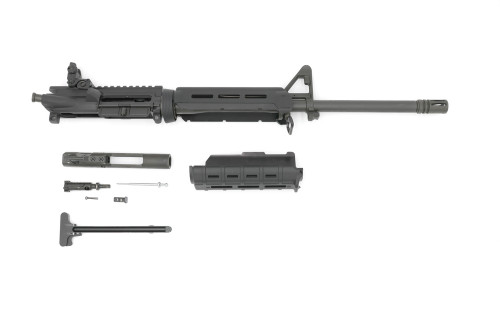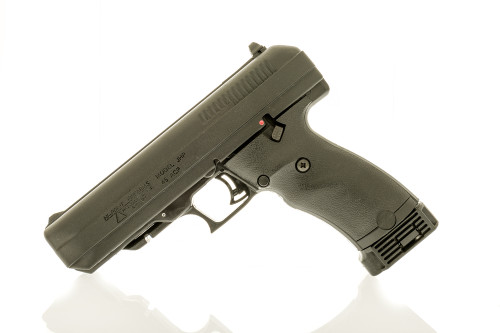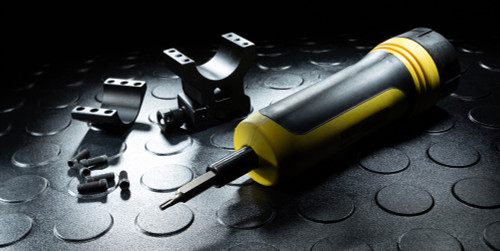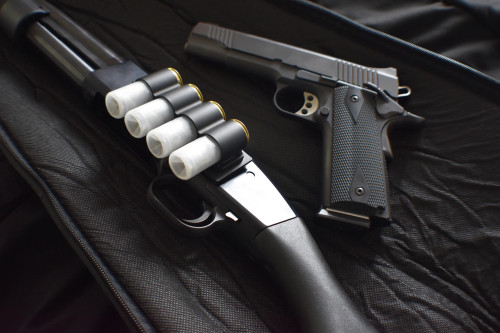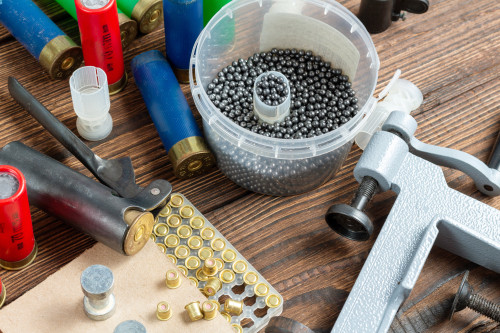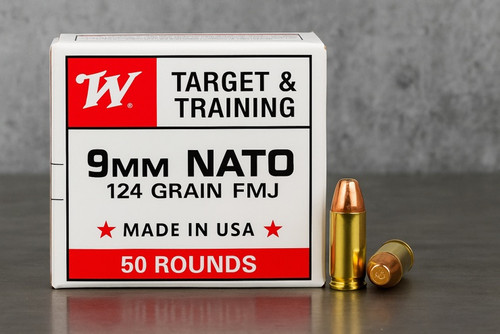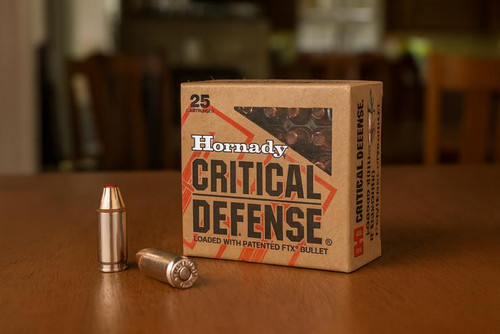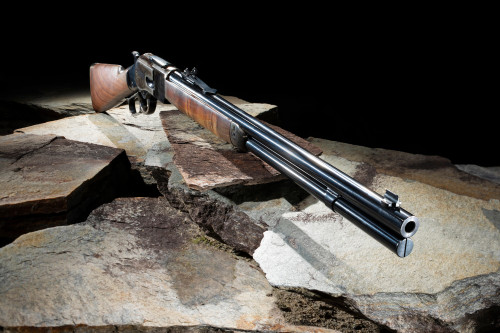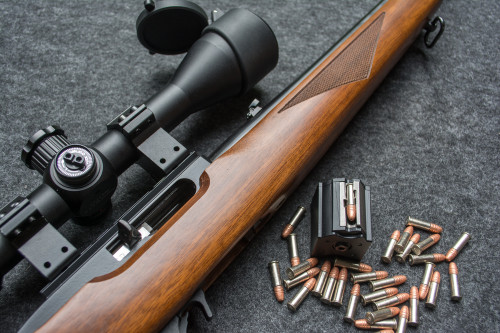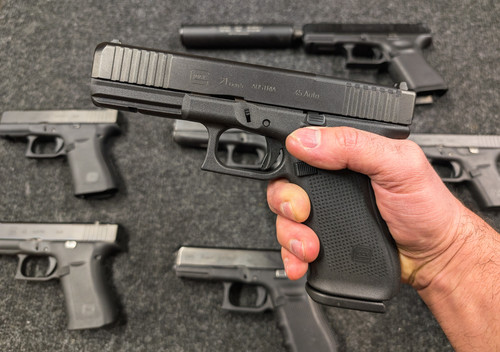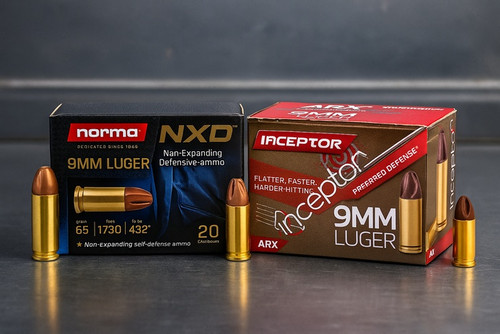When it comes to self-defense, not all bullets are created equal. The evolution of bullet design has come a long way, particularly with the development of hollow point ammunition. First introduced in the late 19th century, hollow point bullets were designed to expand upon impact, increasing stopping power while minimizing overpenetration. This innovation was a game-changer in both law enforcement and civilian defensive circles, offering a more controlled and effective way to neutralize a threat.
The Problem With Overpenetration
When it comes to defensive shooting, the goal is simple: stop the threat as quickly and safely as possible. But when a bullet passes through the target and continues traveling, it becomes a serious liability. This phenomenon is known as overpenetration, and it’s one of the primary reasons full metal jacket (FMJ) rounds are discouraged for personal defense.
Why Overpenetration Is Dangerous:
- Risk to Innocent Bystanders: A bullet that exits an attacker can retain lethal velocity and strike someone else behind them—be it a family member in your home, a neighbor, or a passerby in a public setting.
- Reduced Energy Transfer:Defensive ammunition is meant to stop threats quickly, and that requires the bullet to deposit all of its energy in the target. Overpenetration often results in a narrow wound channel and wasted kinetic energy, making it less effective at immediately stopping an aggressor.
- Unpredictable Trajectories:Once a bullet exits the body, it can ricochet off walls, floors, furniture, or other objects—especially in indoor environments—creating unpredictable and uncontrollable risks.
Real-World Consequences
In home defense scenarios, these risks are amplified. Walls in most homes are made of drywall and soft materials that won’t stop a high-velocity bullet. A round that misses or exits the intended target can travel through several rooms—or even into neighboring apartments or homes—before losing momentum.
Why Hollow Points Are the Solution
Modern hollow point and bonded defensive rounds are designed to expand on impact and stay within the body, minimizing the risk of overpenetration. These rounds also create wider wound cavities, making them more effective at incapacitating threats quickly and ethically.
Today, the market is flooded with various bullet designs, but some rise above the rest when it comes to protecting yourself or your loved ones. Below are the five best bullet designs for handgun rounds tailored specifically for defensive use.
1. Jacketed Hollow Point (JHP)
The Jacketed Hollow Point (JHP) is the most recognized self-defense bullet. Designed with a soft lead core and a hollow cavity at the tip, it expands upon impact to create a larger wound channel and minimize the risk of overpenetration.
Federal Premium 9mm 147gr JHP

Why It’s Great for Defense:
- Reliable expansion
- Minimized risk to bystanders
- Proven stopping power
Top Performer: Federal HST
According to FBI testing, Federal HST is among the most consistently performing JHPs on the market. It exhibits excellent expansion and penetration through heavy clothing and other intermediate barriers without sacrificing reliability or accuracy. The bullet's design resists clogging and mushrooms evenly for maximum tissue disruption.
2. Bonded Hollow Point
Bonded hollow points chemically or mechanically fuse the lead core and copper jacket together, preventing separation after impact. This design ensures deep penetration and high weight retention, especially through tough barriers like auto glass or heavy clothing.
Speer Gold Dot G2 45 ACP 230 gr. JHP

Why It’s Great for Defense:
- Retains mass after impact
- Performs well through barriers
- Trusted by law enforcement
Top Performer: Speer Gold Dot
The Speer Gold Dot was purpose-built for law enforcement and consistently dominates FBI ballistic testing. Its proprietary bonding process ensures near 100% weight retention, even when fired through challenging barriers. Expansion is symmetrical and reliable, providing ideal wound cavity dimensions without overpenetration.
3. Polymer-Tipped Hollow Point
This design uses a polymer plug in the hollow point cavity to aid feeding reliability and expansion. The polymer tip helps maintain the bullet’s aerodynamic shape and pushes back into the cavity upon impact to initiate rapid expansion.
Hornady Critical Defence 380ACP 90gr Hollow Point

Why It’s Great for Defense:
- Feeds smoothly in semi-autos
- Initiates expansion through clothing
- Reliable energy transfer
Pros
- Affordable price point for bulk purchases
- Reliable feeding and cycling in semi-auto rifles
- Clean-burning powder reduces fouling in barrels
Cons
- Not suitable for hunting due to lack of expansion
- Can be less accurate at longer distances compared to heavier bullets
Top Performer: Hornady Critical Duty/ Critical Defense
Hornady Critical Duty was engineered specifically to meet the rigorous demands of the FBI Ballistic Testing Protocol, and it excels in the heavy clothing and barrier penetration categories. The FlexLock design includes a robust core and InterLock band to maintain structural integrity, while the polymer tip ensures consistent performance in real-world scenarios.
4. Frangible Bullets
Frangible bullets disintegrate on impact with hard surfaces, reducing the chances of ricochet or overpenetration. These rounds are ideal for close-quarter defense situations, particularly in home environments where bystanders may be present.
Why It’s Great for Defense:
- Low risk of collateral damage
- Breaks apart on impact
- Safe for tight environments
Top Performer: SinterFire Special Duty
When it comes to frangible defensive rounds, SinterFire’s Special Duty line stands out in FBI barrier testing. Unlike many frangibles, SinterFire’s design offers controlled fragmentation while still achieving effective penetration in soft targets. It’s a rare frangible that performs well both ballistically and defensively.
5. Monolithic Copper Hollow Point
These solid copper bullets are often CNC-machined for precision and feature fluted or pre-scored tips for controlled expansion. They're lead-free and designed to perform consistently across a wide range of barriers.
Barnes Vor-tx 10mm 155gr XPB

Why It’s Great for Defense:
- High penetration with expansion
- Barrier-blind performance
- Eco-friendly and non-toxic
Top Performer: Barnes TAC-XPD
The Barnes TAC-XPD has been extensively tested and receives high marks in FBI protocol testing. It penetrates deeply while maintaining 100% weight retention and reliable expansion, even through automotive glass and heavy clothing. Its fluted tip design promotes devastating wound channels while maintaining control.
Why Doesn’t the Military Use Hollow Points?
While hollow points are superior for civilian self-defense, the U.S. military predominantly uses full metal jacket (FMJ) rounds due to international law. Specifically, the Hague Convention of 1899 prohibits the use of expanding bullets in warfare. FMJs are designed for penetration, not controlled expansion, and while they meet military logistical needs, they are not ideal for self-defense.
Why Civilians Should Avoid FMJs for Defense:
- Overpenetration risks: FMJs can pass through the target and hit unintended objects or people.
- Less stopping power: Without expansion, FMJs are less likely to incapacitate a threat quickly.
- Poor performance in soft tissue:They often pass straight through without transferring sufficient energy.
For self-defense, FMJ rounds are best left to the training range—not your nightstand or concealed carry weapon.
Final Thoughts
Choosing the right bullet design is just as important as choosing the right handgun. The Jacketed Hollow Point remains the benchmark, but innovations like bonded hollow points, polymer-tipped bullets, frangibles, and monolithic copper rounds give modern defenders options tailored to specific environments and needs. While the military is bound by international law to use FMJs, civilians have the freedom—and responsibility—to choose ammunition that maximizes personal protection while minimizing risks to others.
Whether you're defending your home, carrying concealed, or preparing for the worst, make sure your ammo works for you—not against you.
- For overall accuracy and reliability , Hornady Frontier 75gr BTHP Match is the way to go.
- If you spend a lot of time at the range, Magtech 62gr FMJ provides an affordable, high-volume option.
- Shooters on a tight budget should check out PMC X-Tac 55gr FMJBT for solid performance without breaking the bank.
- If you run an SBR or AR pistol, Hornady Black 75gr SBR Soft Point is optimized for short barrels and home defense.
No matter your needs, stocking up on quality 5.56 ammunition is always a smart move. Stay prepared, stay trained, and shoot with confidence!
References
Federal Bureau of Investigation. (2014). FBI Ammunition Testing Protocol. Retrieved from: https://www.fbi.gov
Ballistics by the Inch. (n.d.). Ammunition Performance Charts. Available at: http://www.ballisticsbytheinch.com
Lucky Gunner Labs. (2015). Self-Defense Ammo Ballistic Tests. Retrieved from: https://www.luckygunner.com/labs/self-defense-ammo-ballistic-tests
International Committee of the Red Cross. (n.d.). Declaration (IV, 3) – Prohibiting the Use of Bullets Which Expand or Flatten Easily in the Human Body. Available at: https://ihl-databases.icrc.org
Roberts, G.K. (2007). Best Choices for Self-Defense Ammo. Cited in various law enforcement training documents and personal defense publications.
Hornady. (n.d.). Critical Duty Product Overview and FBI Testing Compliance. Retrieved from: https://www.hornady.com
Federal Premium Ammunition. (n.d.). Federal HST Duty Ammunition Testing Results. Available at: https://www.federalpremium.com
Speer Ammo. (n.d.). Gold Dot Duty Ammo Performance Data. Available at: https://www.speer.com
Barnes Bullets. (n.d.). TAC-XPD Defensive Ammo Specs and Testing. Retrieved from: https://www.barnesbullets.com
SinterFire Inc. (n.d.). Special Duty Frangible Ammo Overview and Use Cases. Available at: https://www.sinterfire.com




 Pro Armory Editorial Team
Pro Armory Editorial Team







